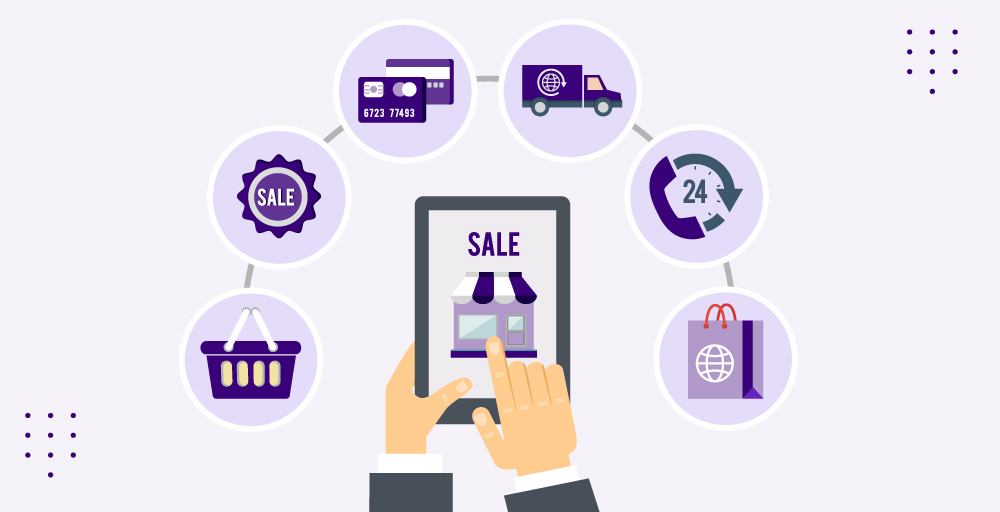
Are you a seller and want to sell your products faster and smarter than others? During the process, you might face several challenges while promoting and delivering your products or services to customers.
No wonder selling goods and services is challenging for everyone in today’s competitive market. You have to face various difficulties that include evolving buyer expectations, a changing economic environment, and heavy competition.
So, to get ahead of your competitors and overcome these obstacles, you have to sell your products faster and smarter, which will lead you to increase your sales and revenues.
In this guide, we will briefly explain to you how to sell your product or service faster and smarter.
Tips on How to Sell Your Product or Service Faster and Smarter
Every entrepreneur should know that you have to be one step ahead of your competitors to increase your sales. You have to study the market, examine the products, apply the best marketing strategy, and follow the latest market trends.
Besides this, here are ten key points that will help you to reach your ideal customers and boost your sales.
1. Know Your Ideal Customer
Ideal customers are those people who love and enjoy your products or services and share that enthusiasm with the people they know.
For that reason, it’s important to know about your ideal customers and understand them, who they are, and what they are exactly looking for. It includes understanding the characteristics of your buyers who are most likely to be interested in buying your products or services.
Furthermore, you have to communicate personally with those who have used your products to get their feedback. You can get a Vanity phone number for your business, it helps to improve customer service and experience. Moreover, customers can easily memorize it and reach out to you.
2. Utilizing the Sales Funnel Model
The Sales Funnel Model is a representation of the customer’s journey, from prospecting to purchase.
When you utilize this method, it helps you organize your approach to sales and find weak spots in your sales methods.
Even more, it also tests out possible improvements and better assists with customers.
Overall, the point of using this method is to reach your business target audience and move them through a series of steps, which eventually results in them becoming your customers.
3. Master the Art of Storytelling
Everyone loves stories, and a good story conveys a good message to people. Storytelling is a powerful tool in the digital era that can increase your product’s value in the world of sales.
Initially, you have to select your target audience to craft a better and more compelling story to create it effectively.
Following that, you can create an emotional connection with your prospects and inspire them to become loyal customers.
After mastering it, you can transform your sales presentation from exhausting to an engaging and compelling experience that resonates with your buyers.
4. Leverage Powerful Content Marketing
Every business owner should be aware of the power of content marketing in this digital world, especially if you’re selling online.
This is a powerful tool that can drive your business forward in the digital presence.
Businesses need to create excellent content about their products or services after understanding customers’ desires. It boosts your brand visibility to more people.
Also, buyers will get to know more about your products or services closely with the content. Hence, make sure to explain how your products solve the customer’s problem and what the main features are that make you better than others in your content.
5. Utilize Social Media Ads
Millions of users are active on social media platforms like Facebook, Twitter, and Instagram on a daily basis.
So, it’s easier to promote your products or services using social media ads. You just have to select the target audience that you want to sell your products and place ads on those platforms after paying some cost.
It is a very simple and effective way to communicate with your prospects and improve your brand value.
The biggest advantage of doing social media ads is you can even select a specific geographic area.
6. Motivate Employees
Employees play a vital role in growing the company and creating good brand value among buyers.
So, keeping the employees motivated increases the work value. It depends on the level of dedication and commitment that the employee gives during the working day.
Thus, a company should focus on developing a positive work culture to encourage creativity and innovation.
You have to promote teamwork and collaboration to set clear goals. Remember, motivated employees always give more than an employer expects from them at work.
7. Invest in Email Marketing
People mainly prefer email over other media for communication. Even more, this is the platform where you’ll reach your mobile users the most.
A billion users use email, which makes email marketing a powerful tool for a company who are looking for effective advertising strategies to engage with its loyal customers.
A company can inform its prospects about its latest discounts, deals, new products, and much more through email.
Additionally, you can make customers aware of the product’s features and their advantages by sending personal mail to them.
8. Monitor Trends
You always have to follow the latest market trends to know what customers are exactly looking for.
These days, it’s easy to track it using a trend discovery tool that provides a database of trending topics. Furthermore, netizens follow the trend started by the influencers; therefore, you can also track them on social media.
By looking at market trends, businesses can make decisions based on facts. It helps you to understand where the market is heading. Nowadays businesses have started using phone system for sales teams to simplify communication. It will help you to increase productivity. Even more, it helps you to reduce the risk of going down in the market.
9. Presenting a product benefit
Product benefits are often the main point of selling. In this technique, when you gain knowledge about the customer’s desire, then you can tell how your product will fit their needs.
10. Offer a free trial or demonstration
Offering a free trial or demonstration helps customers determine if the product is helpful or satisfies their needs or not for them. For instance, when buyers purchase an Apple Vision Pro, they will first try it and buy if the product meets their requirements.
Why is it Important to Have Effective Selling Strategies?
Whether you have a small or big business, everyone has to follow selling strategies that are effective to increase sales.
This strategy helps you to build a mutually beneficial relationship with customers. It also allows the company to focus on its target customers and communicate with them in relevant ways.
Even more, effective selling strategies improve team performance to achieve effective targets, higher conversion rates, and increased customer retention rates.
Some other important of having an effective selling strategy include:
Enhance Customer Service
An effective sales strategy helps you to interact better with customers and allows you to understand their needs more closely.
Furthermore, it allows you to be more attentive to customer inquiries and respond instantly to improve customer experience.
Boost Sales Efficiency
An excellent sales strategy optimized resources and prioritized the most profitable areas.
A company can decide which marketing channels bring the best results by analyzing the customer data to adjust the approach for more efficient sales operations for a better return on investment.
Increase More Revenue
A perfect sales strategy helps you to boost higher conversion rates and generate more revenue. But you have to target the right markets using the resources effectively to increase profits.
Conclusion
Overall, whether you have a small or big business, everyone has to follow the sales technique to boost their sales and increase their annual growth rate.
You always need to follow the market trends to know what your prospects are really looking for in products and services. Businesses can apply the above eight key points to sell their goods or services faster than others.
Frequently Asked Questions (FAQs)
- What are the 4 basic selling techniques?
The four basic selling techniques are as follows:
- Transactional selling
- Solution selling
- Consultative selling
- Provocative selling
- What are the 5 steps to sell?
Here are the five steps to follow to sell your products:
- Identify your target customer
- Find out about buyers’ desire
- Provide a solution or present value proposals
- Close Sales
- Complete the sale and follow up with thank you notes
- What is a method of selling?
A method of selling is the method used by a salesperson or sales team that helps to sell products or services more effectively. There are various methods of selling, such as SPIN selling, Inbound selling, Solution selling, and many more.
The post 10 Tips on How to Sell Your Product or Service Faster and Smarter appeared first on noupe.



